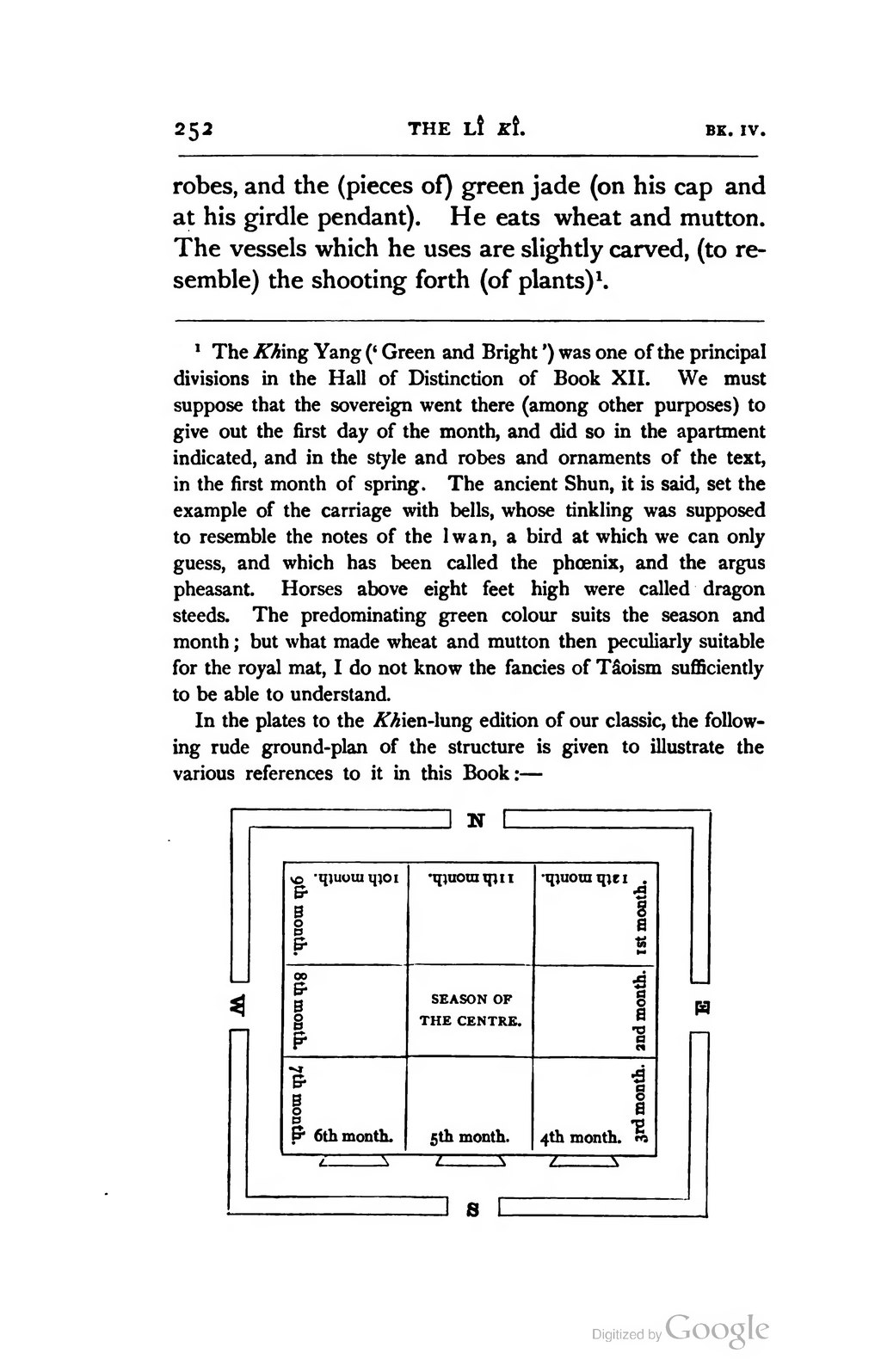robes, and the (pieces of) green jade (on his cap and at his girdle pendant). He eats wheat and mutton.
The vessels which he uses are slightly carved, (to resemble) the shooting forth (of plants)[1].
- ↑ The Khing Yang ("Green and Bright") was one of the principal divisions in the Hall of Distinction of Book XII. We must suppose that the sovereign went there (among other purposes) to give out the first day of the month, and did so in the apartment indicated, and in the style and robes and ornaments of the text, in the first month of spring. The ancient Shun, it is said, set the example of the carriage with bells, whose tinkling was supposed to resemble the notes of the lwan, a bird at which we can only guess, and which has been called the phoenix, and the argus pheasant. Horses above eight feet high were called dragon steeds. The predominating green colour suits the season and month; but what made wheat and mutton then peculiarly suitable for the royal mat, I do not know the fancies of Tâoism sufficiently to be able to understand.
In the plates to the Khien-lung edition of our classic, the following rude ground-plan of the structure is given to illustrate the various references to it in this Book:—

The building is made to consist of nine large apartments or halls; three fronting the different points of the compass, and one in the centre; making nine in all. That in the centre was called "The Grand Apartment of the Grand Fane;" south from it was "The Ming Thang Grand Fane;" on the east "The Khing Yang Grand Fane;" on the west "The Зung Yang Grand Fane;" and on the north "The Hsüan Thang Grand Fane."
In the second month of the seasons, the king went the round of the Grand Fanes. The four comer apartments were divided into two each, each one being named from the Grand Fane on the left or right of which it was. Commencing with the half on the left of the Khing Yang Fane, the king made the circuit of all the others and of the Fanes, returning to the other half on the right of the Hsüan Thang Fane in the twelfth month. The Grand Apartment in the centre was devoted to the imaginary season of the centre, between the sixth and seventh months, or the end of summer and beginning of autumn.

